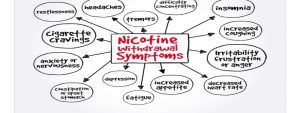Quitting smoking involves more than just breaking a physical habit; it requires identifying and managing triggers that contribute to the urge to smoke. Triggers are cues or situations that increase the likelihood of craving a cigarette and can vary widely among individuals. Understanding your triggers and developing strategies to cope with them are essential steps towards successfully quitting smoking.
Here’s how to identify and manage triggers effectively:
Identify Common Triggers:
Stress: Stress is one of the most common triggers for smoking. Many smokers reach for a cigarette to cope with stress or anxiety. Identify situations or events that cause stress, such as work deadlines, financial worries, or relationship issues.
- Routine: Smoking often intertwines daily routines, such as coffee breaks, driving, or after meals. Pay attention to times of day or specific activities that trigger the urge to smoke out of habit.
- Social Situations: Socializing with friends who smoke or attending events where smoking is prevalent can trigger cravings. Peer pressure and social cues may make it challenging to resist smoking in these situations.
- Emotions: Certain emotions, such as boredom, sadness, anger, or happiness, can trigger the desire to smoke to cope or celebrate. Recognise emotional triggers and how smoking may have become associated with managing these feelings.
- Environmental Cues: Environmental triggers include places, smells, or objects associated with smoking, such as ashtrays, lighters, or designated smoking areas. Being in environments where you used to smoke can evoke intense cravings.
Develop Coping Strategies:
- Avoid Triggers When Possible: Identify triggers to avoid or minimise exposure to, especially in the early stages of quitting. For example, if certain social situations or places trigger cravings, consider temporarily avoiding them or finding alternative activities.
- Modify Your Routine: Replace smoking with healthier activities or habits. For instance, if you used to smoke during work breaks, take a walk, practice deep breathing exercises, or socialise with non-smoking colleagues instead.
- Practice Relaxation Techniques: Learn relaxation techniques such as deep breathing, meditation, or yoga to reduce stress and manage cravings. These techniques can help you stay calm and focused during challenging moments.
- Distract Yourself: When cravings strike, engage in activities that keep your mind and hands busy. Hobbies, exercise, reading, or listening to music can provide a healthy distraction and help shift your focus away from smoking.
- Seek Support: Reach out to friends, family, or a support group for encouragement and understanding. Talking about your triggers and cravings with others who are supportive can provide valuable insights and motivation.
Create a Quit Plan with Trigger Management Strategies:
Develop a personalised quit smoking plan that includes strategies for identifying and managing triggers. Write down your triggers and specific coping techniques that you will use when faced with cravings.
Set realistic goals and milestones for reducing exposure to triggers and overcoming cravings. Celebrate achievements, such as successfully navigating a trigger without smoking, to reinforce positive behaviour.
Successfully quitting smoking involves recognising and managing triggers that contribute to the urge to smoke. By identifying common triggers, developing coping strategies, and seeking support, you can minimise cravings and increase your chances of long-term success. Remember, managing triggers is a gradual process that requires patience, persistence, and a commitment to your quit-smoking journey. Each time you effectively manage a trigger, you strengthen your ability to live a healthier, smoke-free life.
This blog post provides practical advice on identifying and managing triggers that lead to smoking, emphasising the importance of self-awareness, coping strategies, and support in the process of quitting smoking successfully.




